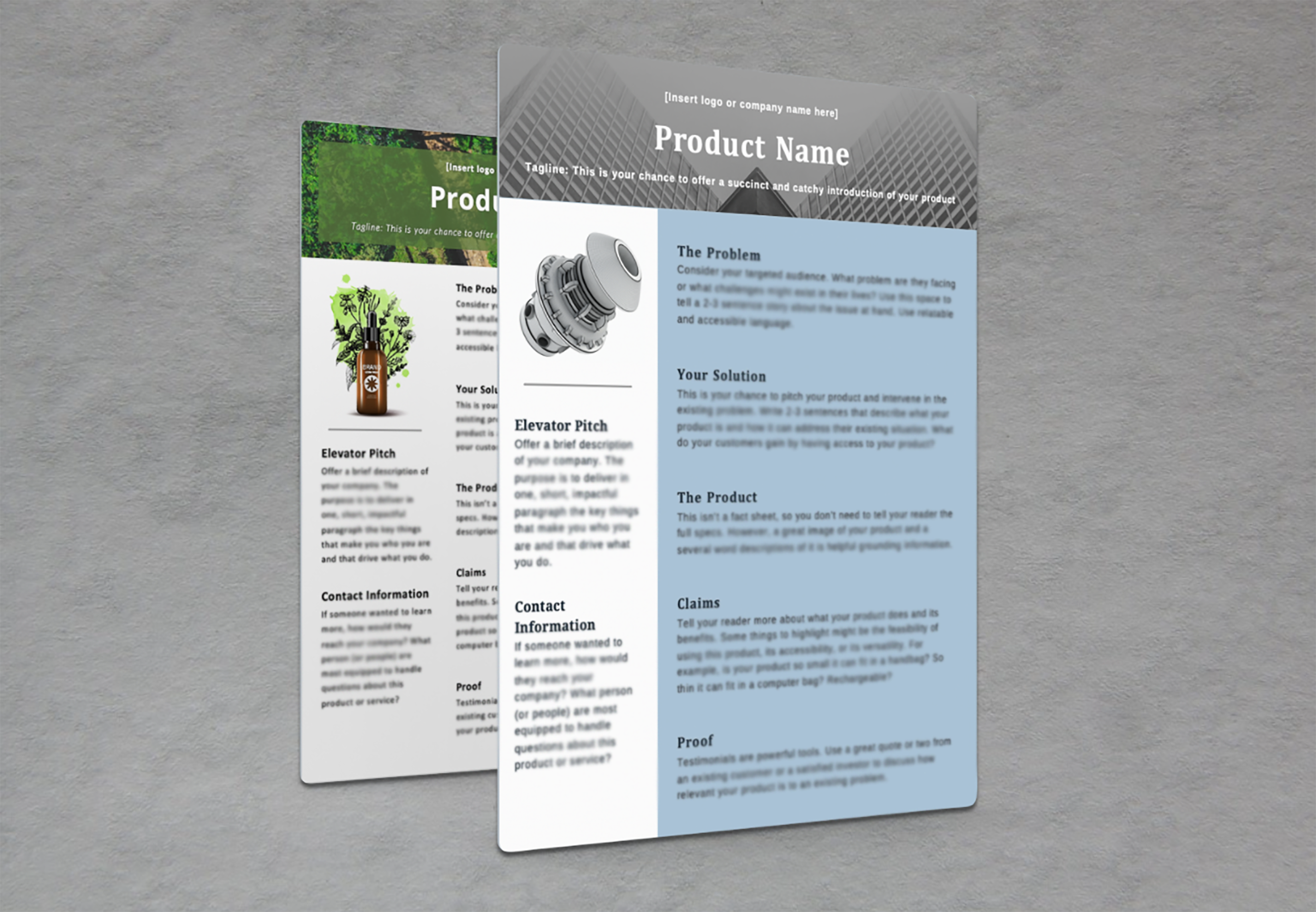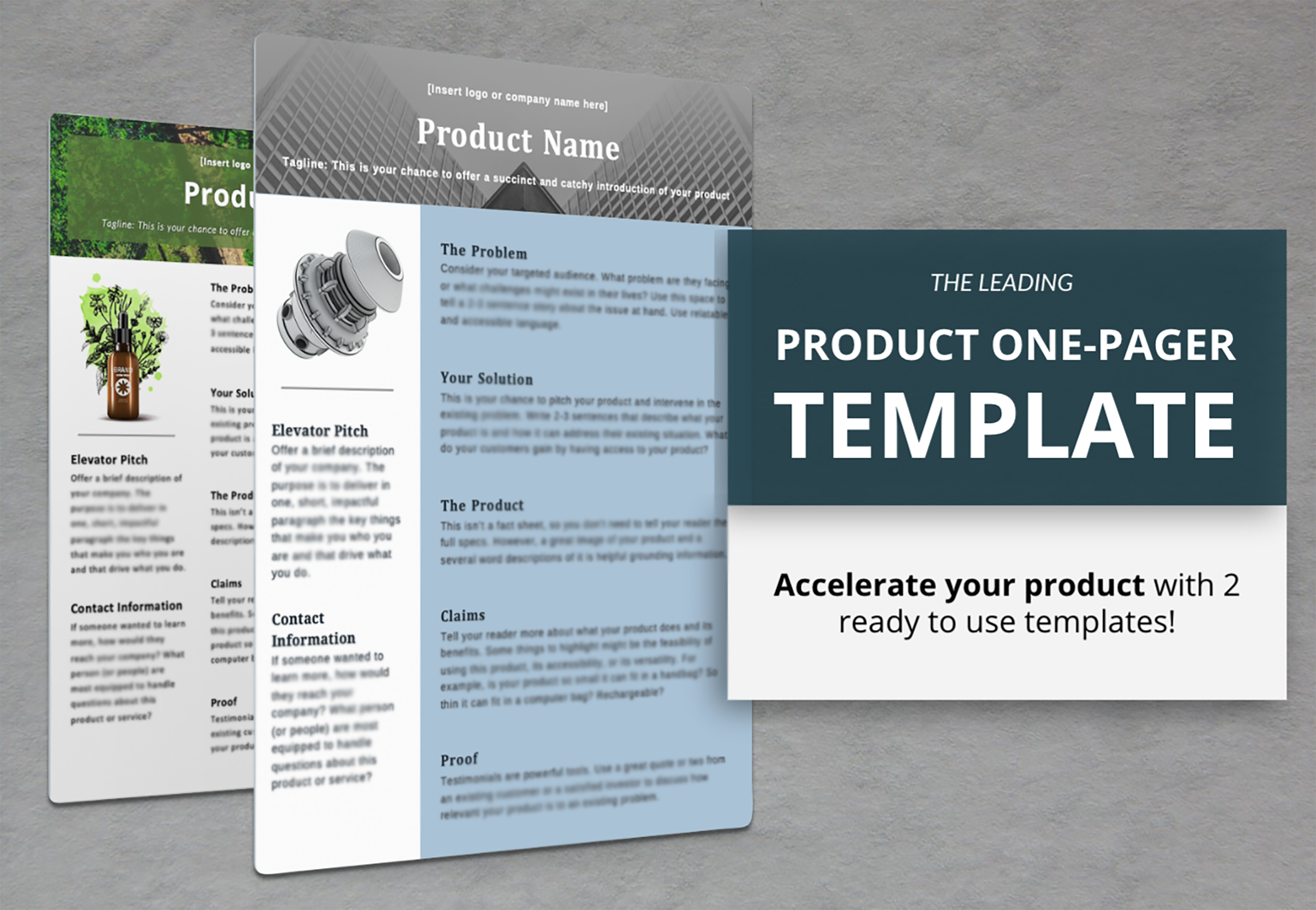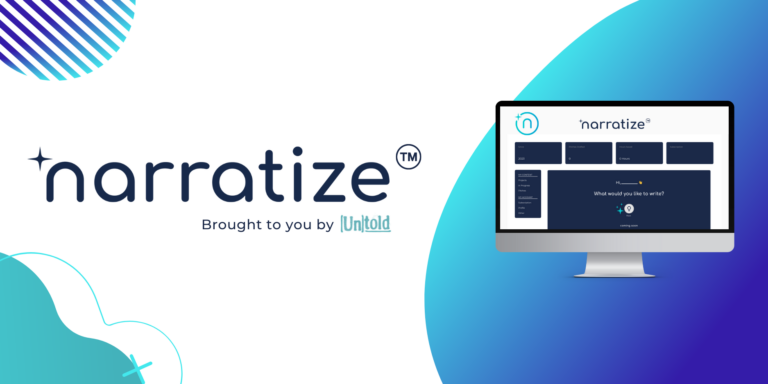Blog >> How to Write a Product Sheet (Plus Templates)
How to Write a Product Sheet (Plus Templates)
A product sheet—or product one-pager—is a quick and effective way to introduce a new product to key stakeholders, such as internal teams, customers, and investors. From product development to marketing, this single-page document can be used throughout the innovation process for a variety of reasons:
- Build support for a new product
- Outline product guidelines
- Define the scope of product development
- Pitch to potential investors
- Describe a proposed product bet
- Educate your teams and customers
- Create brand awareness

A properly-constructed product sheet sets the scene for stakeholders, according to Product Plan. That is—if it’s written in a way that concisely communicates your value proposition and/or educates your reader.
Here are 5 tips for perfecting the content of your product one-pager, whether you’re writing to capture the attention of potential customers or describing processes to team members.
Product Sheet: 5 Writing Considerations
1. Highlight the product over the company
People are investing in the item, not the group who makes it. By definition, your product heet should emphasize the opportunity, viability, and value of your product. Focus on these three key terms as you write your one-pager.
2. Customize for your audience
Ask yourself: What about the product is most relevant to this audience? What is the audience’s level of knowledge of the product/company? What gaps can you bridge? You’ll quickly notice that a potential investor needs different information than your target customer. If your goal is to inform the end-user, make it a priority to use accessible and relatable language. If you’re writing an investor-focused product sheet, you should focus more on investment opportunity, use of funds, and cost of delay.
Untold Content offers professionally-designed investor- and public-focused Product Sheet Templates for the busy professional.
3. Storytelling over facts
This is not a fact sheet, so you don’t need to tell your reader the full specs. Tell a clear and concise story about the problem affecting your target audience. Then, describe your product. How can it be used to solve their existing pain points? What does your product look like in action? What emotions might your product evoke? Remember this advice from Kalungi: “Your product is the foundational block for that solution.”
4. Think about ease
Highlight the feasibility of using your product, its accessibility, or its versatility. For example, is it inexpensive to produce or purchase? Is it easy to use? Whether you’re pitching a new idea to an innovation team or marketing the product to the end user, people want products that can be easily integrated into their lives.
5. Use a testimonial
9 out of 10 people say they trust what a customer says about a business more than what that business says about itself, according to Wyzowl. Consider using a standout quote (or two) from existing customers or a satisfied investor to establish credibility. For an investor-focused product sheet, companies should consider how they might “prove” efficacy to an investor (having a previous ROI might help, if you have it).
Ready to Start Writing your Product Sheet?
Our team of writers, researchers, and designers collaborated to bring you two professionally-designed Product Sheet Templates. One is investor-focused and one is public-facing—both feature a unique, sleek design and expert writing guidance.





